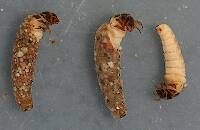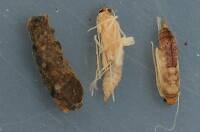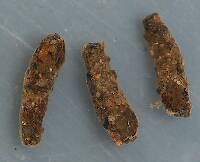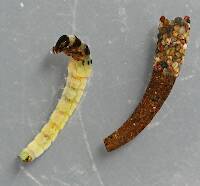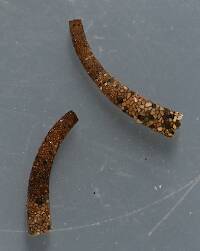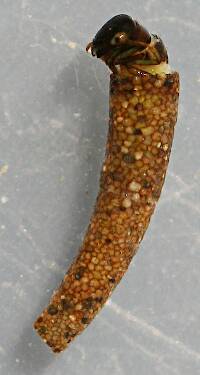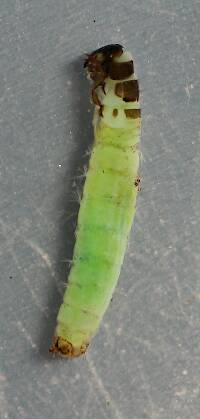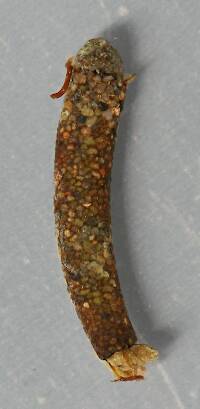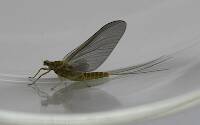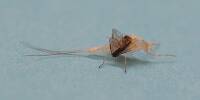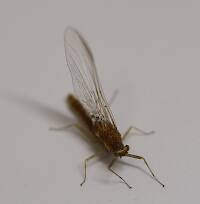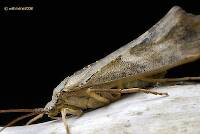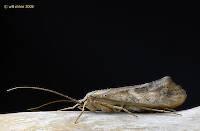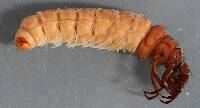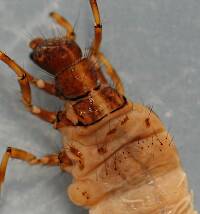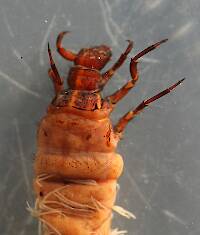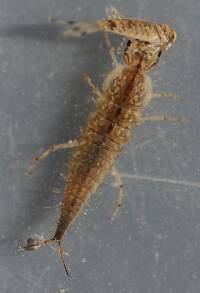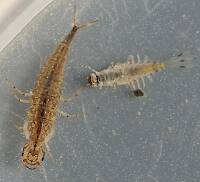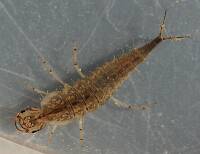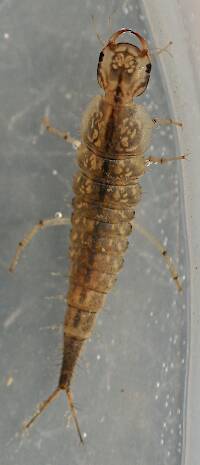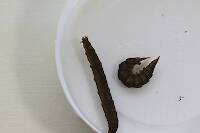
Hex Mayflies
Hexagenia limbata
The famous nocturnal Hex hatch of the Midwest (and a few other lucky locations) stirs to the surface mythically large brown trout that only touch streamers for the rest of the year.
Featured on the forum

It's only barely visible in one of my pictures, but I confirmed under the microscope that this one has a prosternal horn and the antennae are mid-way between the eyes and front of the head capsule.
I'm calling this one Pycnopsyche, but it's a bit perplexing. It seems to key definitively to at least Couplet 8 of the Key to Genera of Limnephilidae Larvae. That narrows it down to three genera, and the case seems wrong for the other two. The case looks right for Pycnopsyche, and it fits one of the key characteristics: "Abdominal sternum II without chloride epithelium and abdominal segment IX with only single seta on each side of dorsal sclerite." However, the characteristic "metanotal sa1 sclerites not fused, although often contiguous" does not seem to fit well. Those sclerites sure look fused to me, although I can make out a thin groove in the touching halves in the anterior half under the microscope. Perhaps this is a regional variation.
The only species of Pycnopsyche documented in Washington state is Pycnopsyche guttifera, and the colors and markings around the head of this specimen seem to match very well a specimen of that species from Massachusetts on Bugguide. So I am placing it in that species for now.
Whatever species this is, I photographed another specimen of seemingly the same species from the same spot a couple months later.
I'm calling this one Pycnopsyche, but it's a bit perplexing. It seems to key definitively to at least Couplet 8 of the Key to Genera of Limnephilidae Larvae. That narrows it down to three genera, and the case seems wrong for the other two. The case looks right for Pycnopsyche, and it fits one of the key characteristics: "Abdominal sternum II without chloride epithelium and abdominal segment IX with only single seta on each side of dorsal sclerite." However, the characteristic "metanotal sa1 sclerites not fused, although often contiguous" does not seem to fit well. Those sclerites sure look fused to me, although I can make out a thin groove in the touching halves in the anterior half under the microscope. Perhaps this is a regional variation.
The only species of Pycnopsyche documented in Washington state is Pycnopsyche guttifera, and the colors and markings around the head of this specimen seem to match very well a specimen of that species from Massachusetts on Bugguide. So I am placing it in that species for now.
Whatever species this is, I photographed another specimen of seemingly the same species from the same spot a couple months later.

Troutnut is a project started in 2003 by salmonid ecologist Jason "Troutnut" Neuswanger to help anglers and
fly tyers unabashedly embrace the entomological side of the sport. Learn more about Troutnut or
support the project for an enhanced experience here.
CenCaAngler has attached these 2 pictures to aid in identification. The message is below.
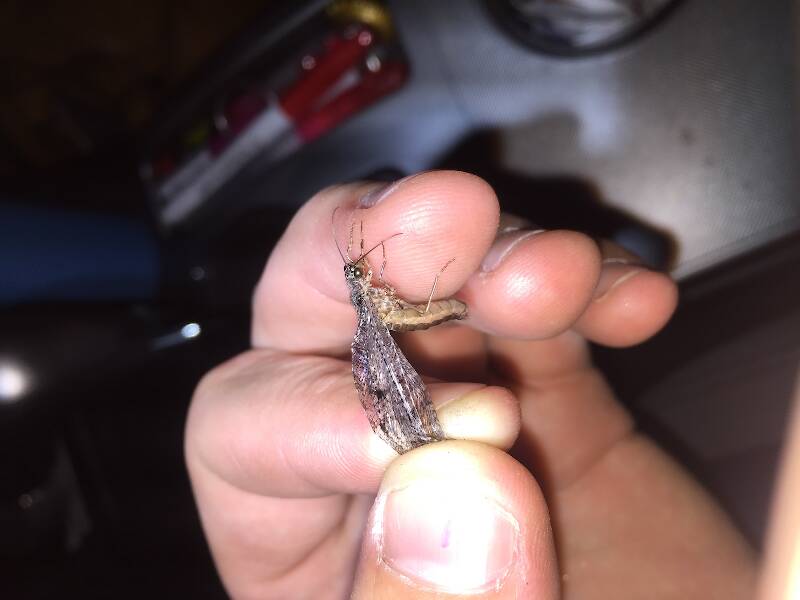
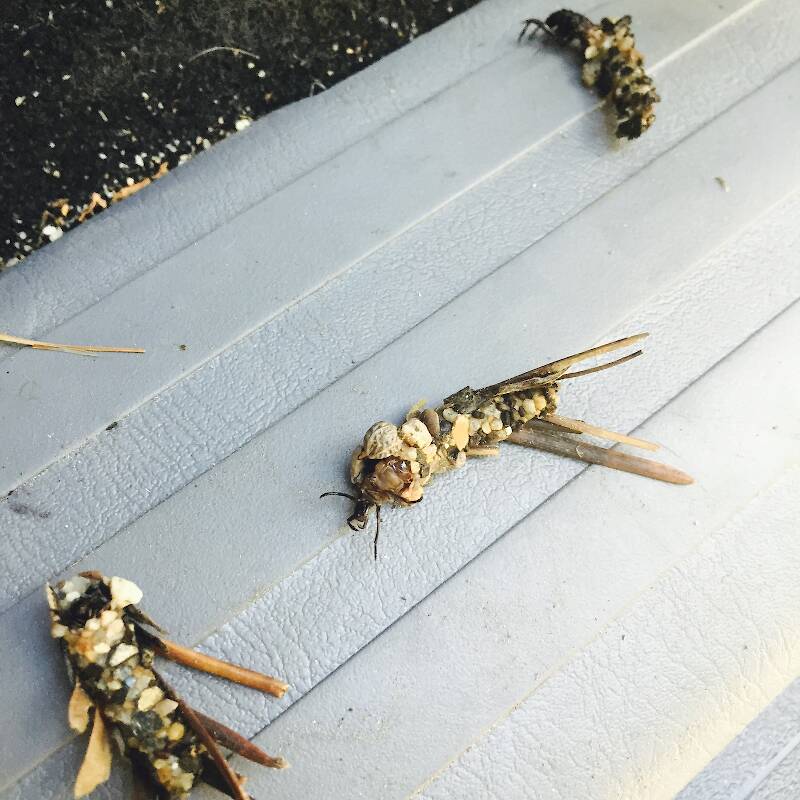
CenCaAngler on Jul 24, 2015July 24th, 2015, 7:31 am EDT
What kind of caddis adults /larvae are these?
Millcreek on Jul 24, 2015July 24th, 2015, 9:43 am EDT
Johnny -
I don't have any idea what your adult caddis is but the larvae look like they could be early instar Dicosmoecus gilvipes. Here are some photos.
http://aquaticinsectsofcentralvirginia.blogspot.com/2014/05/fooled-by-case-theyre-immature-october.html
http://joycegross.com/images.php?img=2222_1710
Mark
I don't have any idea what your adult caddis is but the larvae look like they could be early instar Dicosmoecus gilvipes. Here are some photos.
http://aquaticinsectsofcentralvirginia.blogspot.com/2014/05/fooled-by-case-theyre-immature-october.html
http://joycegross.com/images.php?img=2222_1710
Mark
"If we knew what it was we were doing, it would not be called research, would it?"
-Albert Einstein
-Albert Einstein
Creno on Jul 24, 2015July 24th, 2015, 3:46 pm EDT
Where were these collected - the larvae also look like some of the eastern Pycnopsyche species. Also how large are the larvae? The adult is not a caddis, the antennae are too short for something that size. It is one of the megalotera.
CenCaAngler on Jul 25, 2015July 25th, 2015, 1:17 am EDT
The larvae (approx. 1"-2" with dark brown/black heads and what appeared to be lighter, cream-colored abdomens) were collected from submerged boulders along the banks of the river as well as on rocks positioned between the seams of faster and slower moving water. Any more input or helpful advice and information would be/is greatly appreciated.
Creno on Jul 25, 2015July 25th, 2015, 11:09 am EDT
Sorry, poorly worded question on my part. What Country/State/Province were these collected in? If I presume CA from your response on the Megaloptera The middle larvae doesn't look as burly as the other two so if may be a species of Psychoglypha.
Taxon on Jul 25, 2015July 25th, 2015, 5:52 pm EDT
Dave-
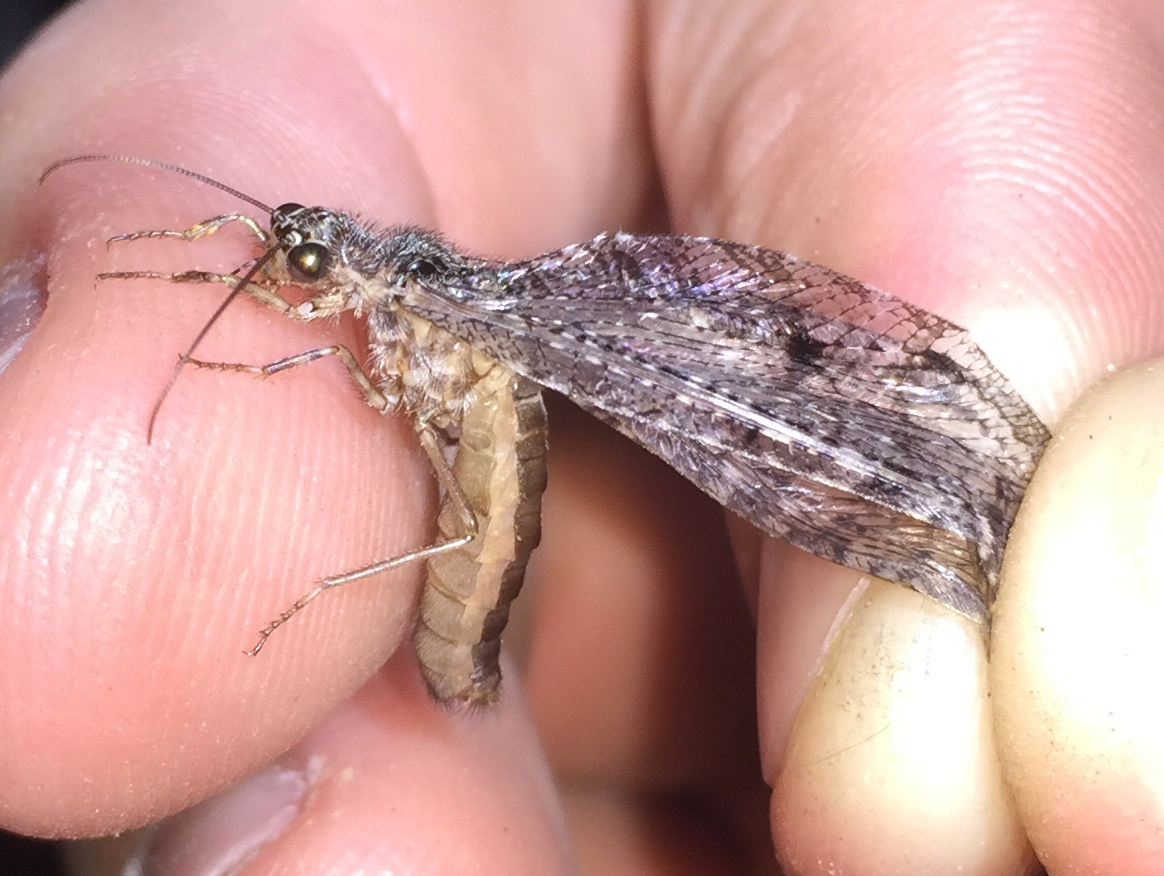
I believe it to be the Giant Lacewing, Polystoechotes punctata.

The adult is not a caddis, the antennae are too short for something that size. It is one of the megalotera.

I believe it to be the Giant Lacewing, Polystoechotes punctata.

CenCaAngler on Jul 26, 2015July 26th, 2015, 12:02 am EDT
The larvae were collect on the Middle Fork of the Kings River in central California, specifically in kings Canyon national park.
Entoman on Aug 2, 2015August 2nd, 2015, 10:43 am EDT
Great job on the ID, Roger. The lack of mandibles precluded the fishflies and I wasn't figuring lacewings over its size.
"It's not that I find fishing so important, it's just that I find all other endeavors of Man equally unimportant... And not nearly as much fun!" Robert Traver, Anatomy of a Fisherman
Quick Reply
Related Discussions
Topic
Replies
Last Reply
4
Oct 29, 2014
by Millcreek
by Millcreek
4
Apr 12, 2014
by Brookyman
by Brookyman




